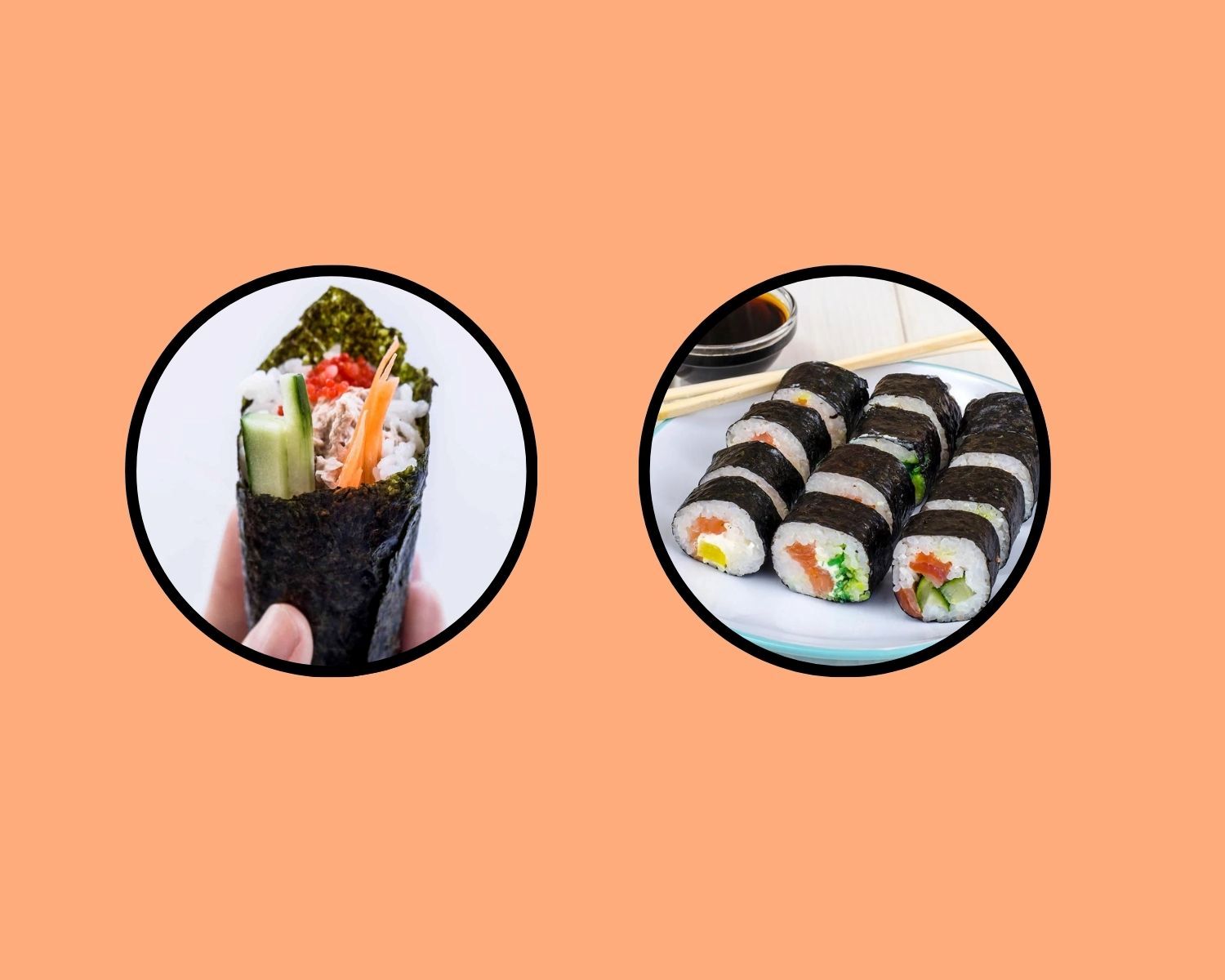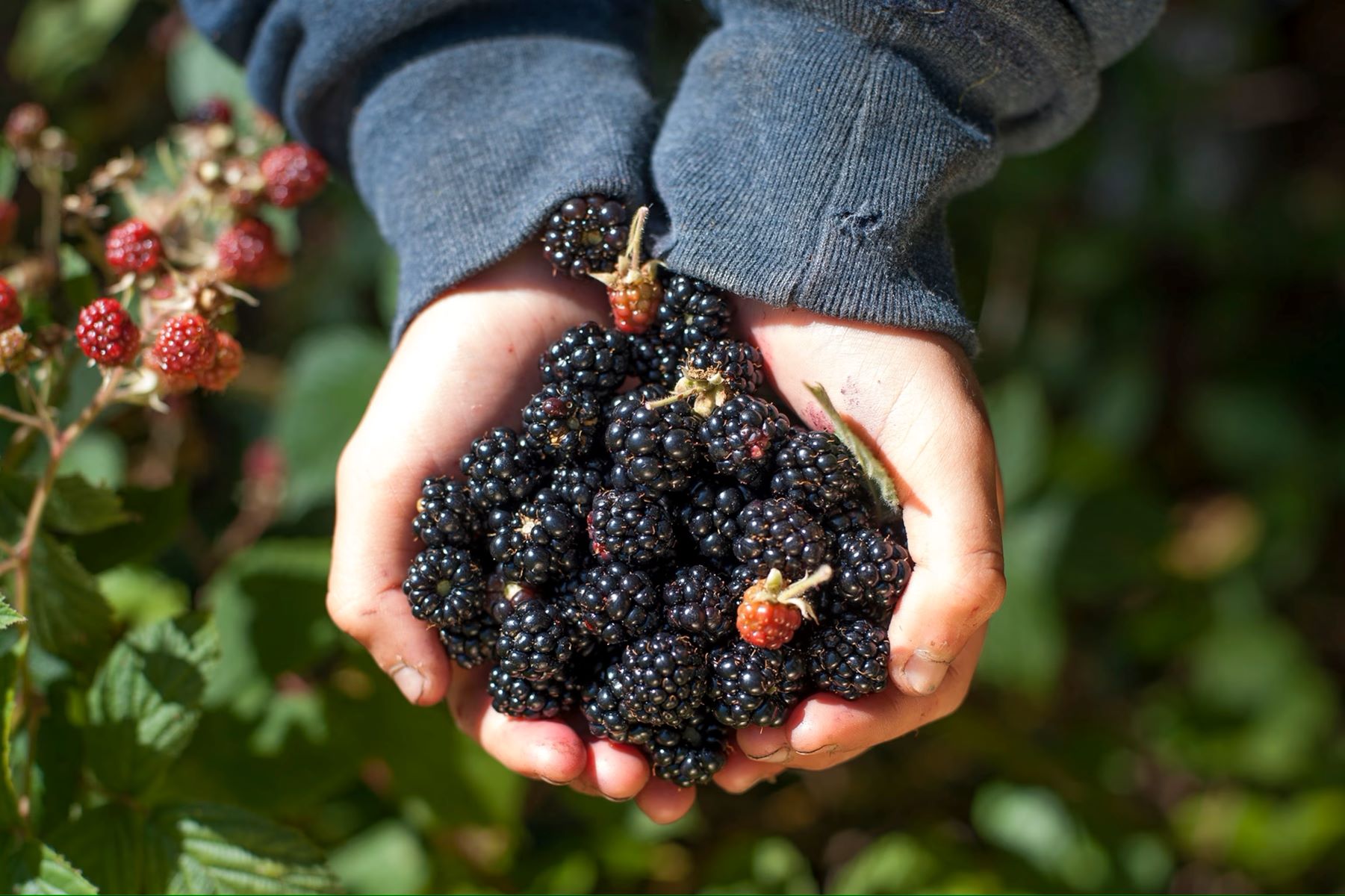Home>Food and Cooking>Taro Vs Ube: Unveiling The Truth Behind These Purple Delights!


Food and Cooking
Taro Vs Ube: Unveiling The Truth Behind These Purple Delights!
Published: January 16, 2024
Discover the differences between taro and ube, two popular purple ingredients in food and cooking. Uncover the truth behind these delightful flavors!
(Many of the links in this article redirect to a specific reviewed product. Your purchase of these products through affiliate links helps to generate commission for Regretless.com, at no extra cost. Learn more)
Table of Contents
Introduction
Taro and ube, both revered for their vibrant purple hues and unique flavors, have been making waves in the culinary world. These root vegetables have captured the attention of food enthusiasts, chefs, and health-conscious individuals alike, sparking debates and igniting a passion for exploring their distinct characteristics. As we embark on this enlightening journey, we will uncover the fascinating truths behind these purple delights, delving into their origins, nutritional profiles, culinary applications, cultural significance, and potential health benefits. By unraveling the mysteries surrounding taro and ube, we aim to gain a deeper understanding of these remarkable ingredients and appreciate the diversity they bring to the realm of food and cooking. Let's embark on this flavorful expedition and unleash the secrets of taro and ube, celebrating their individuality and the magic they impart to the culinary landscape.
What is Taro?
Taro, scientifically known as Colocasia esculenta, is a starchy root vegetable that belongs to the Araceae family. Native to Southeast Asia and India, taro has been cultivated for centuries and holds a significant place in various regional cuisines. This versatile tuber features a rough, brown outer skin with a creamy white or pale purple flesh, depending on the variety. Renowned for its earthy flavor and slightly nutty undertones, taro offers a unique culinary experience.
Taro is a staple ingredient in many tropical and subtropical regions, where it thrives in moist, well-drained soil. Its adaptability to different growing conditions has contributed to its widespread cultivation across Asia, Africa, the Pacific Islands, and the Caribbean. The plant's large, heart-shaped leaves are also utilized in cooking, further adding to its culinary appeal.
In its raw form, taro contains calcium oxalate crystals, which can cause skin irritation and a stinging sensation if not properly prepared. Therefore, it is crucial to handle and cook taro with care to neutralize these compounds and ensure its safe consumption. Once cooked, taro transforms into a creamy, velvety texture, making it an excellent addition to a myriad of dishes.
This versatile root vegetable can be prepared in various ways, including boiling, steaming, roasting, or frying. It is often used in soups, stews, curries, and stir-fries, adding a delightful richness and depth of flavor to the dishes. Additionally, taro is a key ingredient in popular desserts such as taro ice cream, taro bubble tea, and taro mochi, where its natural sweetness and captivating purple hue elevate the sensory experience.
Taro's rich cultural significance is evident in the traditional cuisines of Hawaii, Samoa, and other Pacific Island nations, where it is a symbol of prosperity and abundance. Its inclusion in festive feasts and ceremonial gatherings underscores its importance in these communities, reflecting the deep-rooted connection between food and cultural heritage.
In essence, taro stands as a testament to the diverse and bountiful offerings of the natural world, captivating palates with its distinct flavor and enriching culinary traditions across the globe.
What is Ube?
Ube, scientifically known as Dioscorea alata, is a tuberous root vegetable that hails from the Dioscoreaceae family. Originating from the Philippines, ube has garnered widespread attention for its striking purple flesh and subtly sweet, nutty flavor profile. Unlike its close relative, taro, which is often characterized by its earthy notes, ube captivates with its distinctively sweet and floral essence, making it a sought-after ingredient in both savory and dessert preparations.
The exterior of the ube root features a rough, dark brown skin, concealing the vibrant purple flesh within. This natural pigment not only adds a pop of color to culinary creations but also signifies the abundance of anthocyanins, powerful antioxidants known for their potential health benefits. Ube's delightful hue has inspired a myriad of visually stunning dishes and treats, contributing to its growing popularity in the global food scene.
In Filipino cuisine, ube holds a revered status, prominently featured in traditional desserts such as ube halaya (a luscious, creamy jam), ube ice cream, and ube-filled pastries. Its alluring purple hue and enchanting flavor have become synonymous with indulgence and celebration, making it a beloved component of festive gatherings and special occasions.
Beyond the realm of desserts, ube's versatility shines through in savory dishes as well. From ube-infused bread and pastries to savory stews and casseroles, this vibrant root vegetable adds a delightful twist to a wide array of culinary creations, showcasing its ability to elevate both sweet and savory flavor profiles.
The cultural significance of ube extends far beyond its culinary applications, embodying a sense of pride and heritage for the Filipino community. Its presence in traditional festivities and family gatherings underscores its role as a symbol of unity and joy, weaving its essence into the fabric of Filipino culture.
In essence, ube stands as a testament to the diverse and bountiful offerings of the natural world, captivating palates with its distinct flavor and enriching culinary traditions across the globe.
Nutritional Comparison
When comparing the nutritional profiles of taro and ube, it becomes evident that both root vegetables offer unique benefits, each contributing its own set of essential nutrients to the diet. Let's delve into the distinct nutritional attributes of these purple delights:
Taro:
- Carbohydrates: Taro is a rich source of complex carbohydrates, providing sustained energy and serving as a valuable staple in many diets.
- Fiber: This starchy tuber contains a notable amount of dietary fiber, promoting digestive health and contributing to a feeling of fullness.
- Vitamins and Minerals: Taro is a good source of potassium, vitamin C, and vitamin E, offering essential nutrients that support overall well-being.
Ube:
- Anthocyanins: Ube's vibrant purple flesh is indicative of its high anthocyanin content, potent antioxidants that may help combat oxidative stress and inflammation in the body.
- Vitamin A: Ube is rich in vitamin A, essential for maintaining healthy vision, immune function, and skin health.
- Carbohydrates and Fiber: Similar to taro, ube provides carbohydrates and dietary fiber, contributing to sustained energy levels and digestive wellness.
While both taro and ube share certain nutritional similarities, such as being excellent sources of carbohydrates and dietary fiber, they each bring their own unique set of vitamins, minerals, and phytonutrients to the table. Incorporating a variety of nutrient-dense foods, including taro and ube, can contribute to a well-rounded and balanced diet, offering a spectrum of essential nutrients to support overall health and vitality.
In essence, the nutritional comparison between taro and ube underscores the value of embracing diverse and wholesome ingredients, each contributing its own nutritional prowess to enrich the culinary tapestry. By celebrating the distinct attributes of taro and ube, individuals can savor the nutritional benefits of these purple delights, further enhancing the vibrancy and nourishment of their meals.
Culinary Uses
Taro and ube, with their distinctive flavors and vibrant hues, have carved a niche for themselves in the culinary world, offering a myriad of creative and delectable applications. Let's explore the diverse culinary uses of these purple delights, unlocking the endless possibilities they present in the realm of cooking and baking.
Taro:
Taro's starchy, creamy flesh lends itself to a wide range of culinary creations, making it a versatile ingredient in both savory and sweet dishes. In savory preparations, taro adds a delightful richness and depth of flavor to soups, stews, and curries, infusing them with a subtle nuttiness and a comforting creaminess. When boiled or steamed, taro transforms into a velvety texture, ideal for mashing or pureeing, allowing it to be incorporated into dips, spreads, and fillings for savory pastries.
Furthermore, taro's adaptability shines in the realm of desserts, where it is celebrated for its natural sweetness and captivating purple hue. From taro-flavored ice cream and bubble tea to taro mochi and cakes, this root vegetable imparts a delightful earthy sweetness to sweet treats, elevating their flavor profiles and adding a touch of visual allure. Taro's ability to harmonize with various ingredients and complement a spectrum of flavors makes it a prized component in the world of pastry and confectionery.
Ube:
Ube's enchanting purple flesh and subtly sweet, nutty flavor have positioned it as a beloved ingredient in an array of culinary endeavors. In Filipino cuisine, ube takes center stage in traditional desserts, such as the luscious ube halaya, a creamy jam made from mashed ube, coconut milk, and condensed milk. This indulgent creation showcases ube's natural sweetness and captivating color, making it a cherished delicacy during festive occasions and family gatherings.
Beyond desserts, ube's versatility extends to savory applications, where it lends its unique flavor and vibrant hue to bread, pastries, and savory dishes. Ube-infused bread and pastries offer a delightful twist, adding a subtle sweetness and a visually striking element to baked goods. Additionally, savory stews and casseroles benefit from the addition of ube, imparting a touch of sweetness and a captivating purple hue to these hearty, comforting dishes.
In essence, both taro and ube stand as testaments to the boundless creativity and culinary ingenuity of chefs and home cooks worldwide. Their ability to seamlessly integrate into a myriad of dishes, from comforting stews to indulgent desserts, underscores their invaluable presence in the culinary landscape, enriching the dining experience with their unique attributes and captivating allure.
Cultural Significance
Taro and ube, beyond their culinary prowess, hold profound cultural significance in various communities, reflecting their integral role in shaping traditions, celebrations, and collective identity.
In Hawaiian culture, taro, known as "kalo," occupies a revered position, symbolizing the sustenance and prosperity of the land. It is the primary ingredient in poi, a traditional staple made by mashing cooked taro corms with water, embodying the essence of communal nourishment and interconnectedness. The cultivation and preparation of taro are deeply woven into Hawaiian traditions, with rituals and ceremonies dedicated to honoring its vital role in sustaining the island's inhabitants. The legacy of taro in Hawaiian culture exemplifies the profound connection between food, land, and heritage, fostering a deep sense of respect and gratitude for the natural abundance provided by the earth.
In the Philippines, ube holds a special place in the hearts of the Filipino people, transcending its role as a mere ingredient to embody a sense of pride and nostalgia. Ube's captivating purple hue and luscious flavor have become synonymous with joyous celebrations and cherished family gatherings. Traditional Filipino desserts featuring ube, such as halo-halo and ube ice cream, evoke a sense of nostalgia and comfort, serving as beloved symbols of Filipino culinary heritage. Ube's presence in festive occasions, from birthdays to holidays, underscores its significance as a harbinger of togetherness and delight, uniting generations through the shared experience of savoring its delectable offerings.
Both taro and ube exemplify the interconnectedness between food and culture, serving as conduits for preserving traditions, fostering community bonds, and honoring ancestral legacies. Their presence in ceremonial feasts, cultural rituals, and everyday meals transcends the realm of sustenance, embodying a profound reverence for the land and the bountiful gifts it bestows upon humanity. Through the lens of cultural significance, taro and ube emerge as ambassadors of tradition and unity, enriching the tapestry of global culinary heritage with their vibrant hues and timeless allure.
Health Benefits
Taro and ube, in addition to their culinary appeal, offer a spectrum of potential health benefits, enriching the diet with essential nutrients and bioactive compounds. Let's explore the distinctive health advantages associated with these purple delights:
Taro:
- Dietary Fiber: Taro is a notable source of dietary fiber, promoting digestive health and contributing to satiety. Adequate fiber intake supports regular bowel movements and may help lower the risk of developing certain digestive conditions.
- Vitamins and Minerals: Taro contains essential nutrients such as potassium, vitamin C, and vitamin E, which play vital roles in supporting overall well-being. Potassium is crucial for maintaining healthy blood pressure levels, while vitamin C and E act as antioxidants, helping combat oxidative stress in the body.
- Complex Carbohydrates: The complex carbohydrates present in taro provide sustained energy, making it a valuable component of balanced meals and aiding in the maintenance of stable blood sugar levels.
Ube:
- Anthocyanins: Ube's vibrant purple flesh signifies its high anthocyanin content, potent antioxidants associated with various health benefits. These compounds have been linked to reduced inflammation, improved heart health, and enhanced cognitive function, offering protective effects against chronic diseases.
- Vitamin A: Ube is rich in vitamin A, a crucial nutrient for maintaining healthy vision, supporting immune function, and promoting skin health. Adequate vitamin A intake is essential for overall wellness and may contribute to a strengthened immune system and enhanced vision.
- Nutrient Density: Ube's natural pigments and unique flavor profile are indicative of its nutrient density, providing an array of essential vitamins, minerals, and phytonutrients that contribute to overall health and vitality.
By incorporating taro and ube into a well-balanced diet, individuals can harness the potential health benefits offered by these root vegetables, embracing their diverse nutritional profiles and enriching their culinary experiences with wholesome, nourishing ingredients. The vibrant colors and unique flavors of taro and ube serve as a testament to the abundance of nature's offerings, inviting individuals to savor the nutritional bounty and embrace the enriching qualities of these purple delights.
Conclusion
In conclusion, the exploration of taro and ube has unveiled a rich tapestry of flavors, cultural significance, and potential health benefits, showcasing the profound impact of these purple delights on the culinary landscape. Taro, with its earthy undertones and versatile culinary applications, has left an indelible mark on traditional cuisines across Asia, the Pacific Islands, and beyond. Its presence in festive feasts and symbolic rituals underscores its role as a harbinger of abundance and communal nourishment, embodying the deep-rooted connection between food and cultural heritage.
On the other hand, ube, with its enchanting purple hue and subtly sweet, nutty flavor, has captured the hearts and palates of individuals worldwide, particularly within the Filipino community. Its role in traditional Filipino desserts and savory creations reflects its status as a symbol of joy, unity, and cherished memories, weaving its essence into the fabric of Filipino culture and celebrations.
The nutritional comparison between taro and ube has highlighted the diverse array of essential nutrients and bioactive compounds they offer, each contributing its own set of health benefits to enrich the diet. From dietary fiber and complex carbohydrates to potent antioxidants and essential vitamins, taro and ube stand as nutritional powerhouses, inviting individuals to embrace their wholesome attributes and savor the nourishing qualities they bring to the table.
Furthermore, the cultural significance of taro and ube transcends their culinary applications, embodying a profound reverence for tradition, unity, and ancestral legacies. Their presence in ceremonial feasts, cultural rituals, and everyday meals serves as a testament to the enduring connection between food and cultural identity, fostering a deep sense of respect and gratitude for the natural abundance provided by the earth.
In essence, the journey through the realms of taro and ube has illuminated the captivating allure and timeless appeal of these purple delights, inviting individuals to celebrate their unique flavors, cultural significance, and potential health benefits. As we continue to explore the diverse offerings of the culinary world, let us embrace the enriching qualities of taro and ube, honoring their legacy and the vibrant tapestry they weave within the global gastronomic mosaic.












